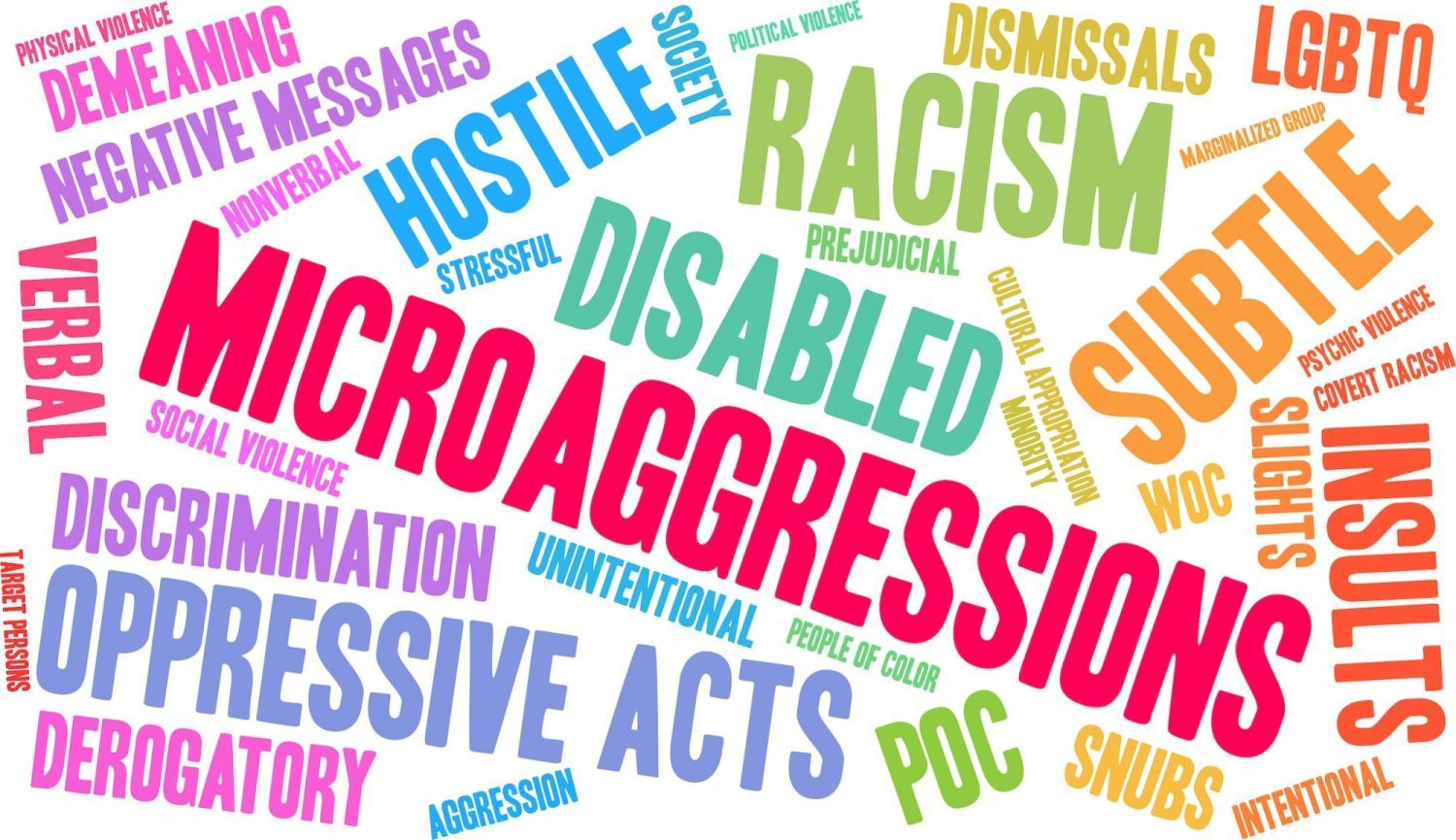Have you have ever been in a situation where you had to prove you were able to do what you are qualified for? Have you felt like you were being addressed inappropriately by your colleagues or workmates based on your beliefs, gender, or political or other affiliation? If your answer to these questions is yes, then you may have been exposed to microaggression in the workplace. Unlike discrimination, microaggressions are subtle and elusive. Their sly nature makes them harder to notice, and as a result, most microaggressions go unreported. However, this does not diminish just how much aggressive words and actions can hurt and distract people.
Microaggressions in the workplace are sensitive matters and difficult to handle because they involve understated language and trying to follow up on such cases can take a toll on the self-confidence and self-worth of the individual. In the workplace, microaggressions can have dire consequences because if they are not controlled, they can affect employee productivity. Additionally, if this vile behavior becomes part of an organization’s culture, it can be difficult to stop because it is often used even by those in the highest positions. In such situations, workplace environments become toxic, affecting employee morale as workers just try to get by and earn a living without enjoying their work. This article explores different aspects of microaggressions in the workplace, detailing how and why it happens and how as an employee you can better cope with it.
Statistics
It may be a sad reality, but even today, women experience the majority of microaggressions in the workplace. A 2018 Women in the Workplace report[ by LeanIn.org and McKinsey found that up to 64% of women have experienced microaggression. Even worse is the fact that non-white women experience it more often. While 36% of all women have had their judgment questioned, this kind of microaggression increased when the women were black, with up to 40% of black women experiencing it.36% On the other hand, 27% of men had their judgment questioned, and only 16% of them had to prove their competency in the workplace.
Examples of Microaggressions in the Workplace
Since spotting workplace microaggression may be difficult for many, this article highlights some of the comments and scenarios that are considered micro aggressive.
Making remarks about the English proficiency levels of an employee or colleague: This is a form of microaggression experienced especially by those perceived to be non-Americans, including Asian Americans and Latinx. Surprisingly, this is often meant to be a compliment on their English proficiency, but it is considered offensive because some people it is addressed to are actually Americans. Further, it makes those who are addressed this way feel they are different and alien in the country in which they were born. In such cases, it would be wise to acknowledge the person’s compliment by saying “thank you” and then gently correcting their bias—for instance, by letting them know that you were born in the country.
Making remarks about hair at the workplace: While this may seem inoffensive, it can be a source of discomfort. The group that is most affected by these remarks is African American women, and it relates particularly to the texture and style of their hair. It is not uncommon for an African American to be asked by a colleague if her hair is her “real hair” or an extension. While this may seem like a harmless question, it isn’t because it makes the individual feel that the person asking them is putting them down because of the texture of their hair. This remark is especially unwelcome if it is asked in advance of discussing work-related issues that should be of concern.
Courtney Connley, in her article “Four Workplace Microaggressions That Can Kill Your Confidence—And What To Do About Them,” recommends that in such a scenario, it would be wise to assess the situation before openly approaching the person about it. She recommends that the person on the receiving end of the comment should find out if the person addressing them is in a position of power and can get them fired. If that is the case, they are advised to talk to another person in the same capacity to speak to them on their behalf and make the aggressor understand that their comment is not welcome. If the person has the same job capacity, Connley recommends simply calling them aside and gently letting them know how their comments affect them.
Mansplaining: This is a form of microaggression experienced especially by racial minorities and women. The Merriam-Webster Dictionary describes mansplaining as a man speaking condescendingly to someone, especially a woman, about something he does not have full knowledge of, under the assumption that he knows more about it than the other person does. People have different ways of dealing with mansplainers, but Leslie Culver, a professor of law at California Western School of Law, recommends that women who are victims of mansplaining gather female colleagues to help them talk to the aggressor.
Segregation: It is not uncommon for people in the workplace to segregate themselves from people of other races or ethnicities. People often claim that they did not mean to separate themselves, but African Americans often perceive it differently and are hurt by these actions.
How Does the Workplace Respond to Microaggressions?
The 2011 article “Discrimination in the 21st Century: Are Science and the Law Aligned?” published in the journal Psychology, Public Policy, and the Law, attempts to make a connection between discrimination and microaggressions in the workplace. It states:
“Extending research and theory, we propose that denigrating messages toward women and ethnic minorities (i.e., microaggressions) emerge in workplace interactions and are sometimes interpreted as discrimination. Specifically, this research explores the presence, severity, and frequency of microaggressions that appear in a random sample of race and gender discrimination cases in federal court dockets since the year 2000. The results suggest that microinsults, microinvalidations, and micro assaults are reported in a variety of discrimination claims. However, only overt and intentional forms of microaggressions (micro assaults) increased the likelihood that decisions favored plaintiffs.”
From the findings, it is easy to see that there is a thin line between microaggressions and discrimination, and the more that the arguments tip toward discrimination, the more they are likely to hold water in court. The findings reveal that micro aggressive acts have yet to gain a foothold in court. Therefore, it is important that workplaces find an efficient way to deal with microaggressions.
As such, employers and organizations should create an organizational culture that discourages micro aggressive acts. They should avoid the mentality that ignoring microaggressions reduces discrimination claims that consume time and money. It is especially important that employers understand that microaggression is quickly becoming more recognized in workplaces as a problem and may soon be more often resolved in court, which may cause extensive damage to the organizations that previously ignored these cases.
Employees also react to workplace aggression in different ways. For instance, many tell their colleagues that they are sensitive if they raise concerns about other colleagues doing things that they find micro aggressive. With such remarks, the person experiencing the aggression loses confidence and feels alienated from the team. This can lead to reduced productivity and may cause victims to resign. An organization with a micro aggressive culture may eventually experience high turnover rates.
On the other hand, some employees understand the complexity of the issue and quickly defend employees who need help. This is the right step to take, because when a person experiencing aggressive acts has support from outside their own group, it is easier for the aggressor to understand that the victim has a legitimate concern that should be addressed. In addition, this type of reaction helps to break down a culture that can develop if the matter is not taken seriously. Also, standing up for a victim of microaggression helps to create an environment in which people feel respected and comfortable in the workplace.


